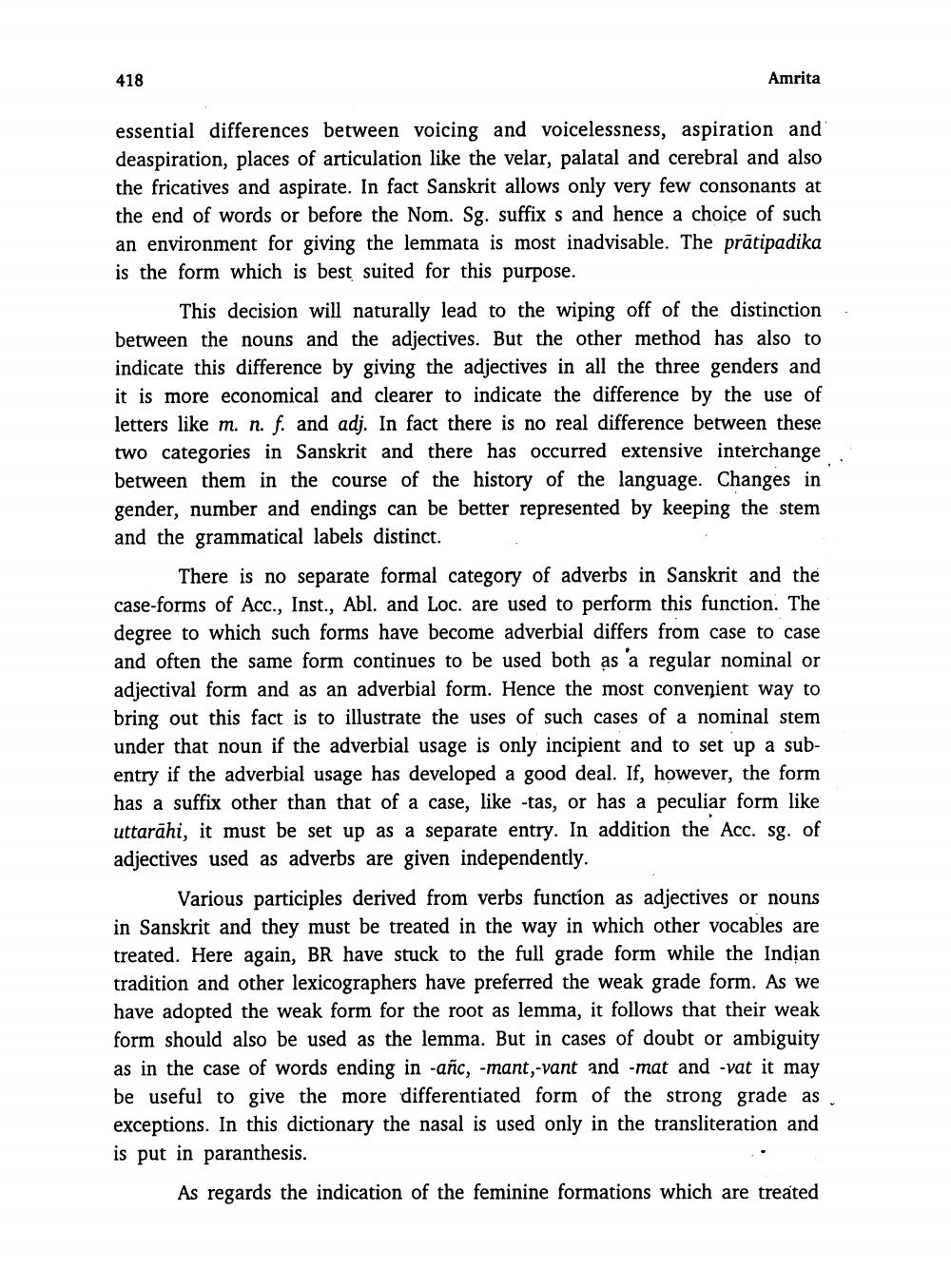________________
418
Amrita
essential differences between voicing and voicelessness, aspiration and deaspiration, places of articulation like the velar, palatal and cerebral and also the fricatives and aspirate. In fact Sanskrit allows only very few consonants at the end of words or before the Nom. Sg. suffix s and hence a choice of such an environment for giving the lemmata is most inadvisable. The prātipadika is the form which is best suited for this purpose.
This decision will naturally lead to the wiping off of the distinction between the nouns and the adjectives. But the other method has also to indicate this difference by giving the adjectives in all the three genders and it is more economical and clearer to indicate the difference by the use of letters like m. n. f. and adj. In fact there is no real difference between these two categories in Sanskrit and there has occurred extensive interchange between them in the course of the history of the language. Changes in gender, number and endings can be better represented by keeping the stem and the grammatical labels distinct.
There is no separate formal category of adverbs in Sanskrit and the case-forms of Acc., Inst., Abl. and Loc. are used to perform this function. The degree to which such forms have become adverbial differs from case to case and often the same form continues to be used both as a regular nominal or adjectival form and as an adverbial form. Hence the most convenient way to bring out this fact is to illustrate the uses of such cases of a nominal stem under that noun if the adverbial usage is only incipient and to set up a subentry if the adverbial usage has developed a good deal. If, however, the form has a suffix other than that of a case, like -tas, or has a peculiar form like uttarāhi, it must be set up as a separate entry. In addition the Acc. sg. of adjectives used as adverbs are given independently.
Various participles derived from verbs function as adjectives or nouns in Sanskrit and they must be treated in the way in which other vocables are treated. Here again, BR have stuck to the full grade form while the Indian tradition and other lexicographers have preferred the weak grade form. As we have adopted the weak form for the root as lemma, it follows that their weak form should also be used as the lemma. But in cases of doubt or ambiguity as in the case of words ending in -añc, -mant,-vant and -mat and -vat it may be useful to give the more differentiated form of the strong grade as exceptions. In this dictionary the nasal is used only in the transliteration and is put in paranthesis.
As regards the indication of the feminine formations which are treated




